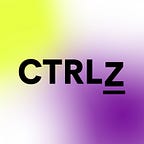What does the TOP 10 shared links on Facebook really look like?
Every day, a New York Times reporter identifies the Facebook posts that generate the most reactions from U.S users in order to identify audience successes and their often conservative, even conspiratorial sources. His results and methodology forced the social network to react to clarify things.
Launched last July, the @FacebooksTop10 Twitter account, now followed by nearly 32,000 subscribers, sums up its ‘raison d’être’ in his biography: “every day, I publish the sources of the top 10 publications with links to U.S Facebook pages , sorted by total number of interactions “.
As an example, here are the top 10 links that “performed” the most on US Election Day. Although most of the media and politicians are known in France, let us point out that Dan Bongino is a conservative commentator seen on Fox News — he recently told the New York Times that he did not know where the growing success of his Facebook page came from. As for Ben Carson, he is a conservative African-American neurosurgeon and member of the Trump administration, who has a joint Facebook page with his wife Candy that attracts more than 5.3 million subscribers.
The @FacebooksTop10 account uses a tool developed by Facebook, CrowdTangle, to collect its information. To collect data, Crowdtangle scans the content of more than 6 million verified pages, groups and profiles on Facebook, including all (public) groups and pages with more than 100 000 likes. Officially, the tool is not interested in ordinary users but in influential issuers, by focusing on the interactions (comments, likes) they generate, without distinguishing (by age, location, etc.) the internet users having reacted.
Politics, very much in the minority on Facebook
Managed manually by Kevin Roose, tech journalist at the New York Times, this daily overview of “what works” (in theory) on Facebook was particularly scrutinized during the election campaign period, followed by the (non)-chaotic transition. Supposed to demonstrate the recurring predominance of the most reactionary and conspiratorial right-wing publications on the social network, this initiative has earned Roose several criticisms of its methodology, even provoking an official response from Facebook.
Entitled What do people really view on Facebook in the United States ?, this text published on November 10 was written by Alex Schultz, vice president of analytics and chief marketing officer for the social network. After minimizing the presence of political content among those “seen” by U.S Facebook users (which amounts to only 6% of posts from contacts or pages), Schultz lists the two main limitations of CrowdTangle-based analyses:
- First, “likes and comments are not equivalent to the reach of the content”.
- Second, “Page publications constitute a minority of what is happening in our ecosystem”.
In addition to these details, Schultz considers that the top of the @ Facebookstop10 account are distorted by focusing only on publications containing a link (to an article, for example), without taking into account other types of posts (image, video hosted on Facebook, simple text, etc.). He thus delivers audience figures — spread over a week and not 24 hours — significantly different from those compiled by Kevin Roose, unlike him having access to the figures of the “reach” of publications, i.e the number of people who “see” the content in their feed, without interacting with it by liking nor commenting:
Not so fake fake news
This debate on the reliability of account analyses (which was continued in an article on the OneZero site) points above all to the lack of transparency of the social network regarding its audience figures. Alex Schultz concedes this half-heartedly in his text, and points out that Facebook is working in partnership with researchers through the Facebook Open Research and Transparency (FORT) project. Attached to various universities, several of them carried out research during the electoral campaign: their scientific publications are expected next year. They will allow us to see more clearly than the “draft analytics”, as Schultz calls them, which his own text and the @ FacebooksTop10 account provided.
Lengthy research time rather than daily media reaction: some will see in this situation a symbol for a necessary step back from the immediacy of social networks. Especially when their “participant-observers” show haste or imprecision in their criticism. On November 10 Kevin Roose highlighted 4 articles drawn from the 10 links that generated the most activity on Facebook in the past 24 hours, commenting them as follows: “Facebook is really full of right-wing disinformation at the moment”.
Facebook is absolutely teeming with right-wing misinformation right now. These are all among the 10 most-engaged URLs on the platform over the last 24 hours (per @NewsWhip data) pic.twitter.com/WlTR10fRBE
- Kevin Roose (@kevinroose) November 10, 2020
Problem: These four pieces of news published by pro-Trump sites labelled as “disinformation” by the New York Times reporter were in fact genuine and verified, as The Wrap site explained. Roose attempted to defend himself this way: “for the Conservatives upset by this: yes, it is possible that an article is factually correct * and * part of a disinformation campaign designed to undermine confidence in an election”. To date, this clarification has been re-tweeted 313 times, while it’s initial misleading, undeleted tweet peaks at 3800 re-tweets.
Originally published at https://ctrlzmag.com.
